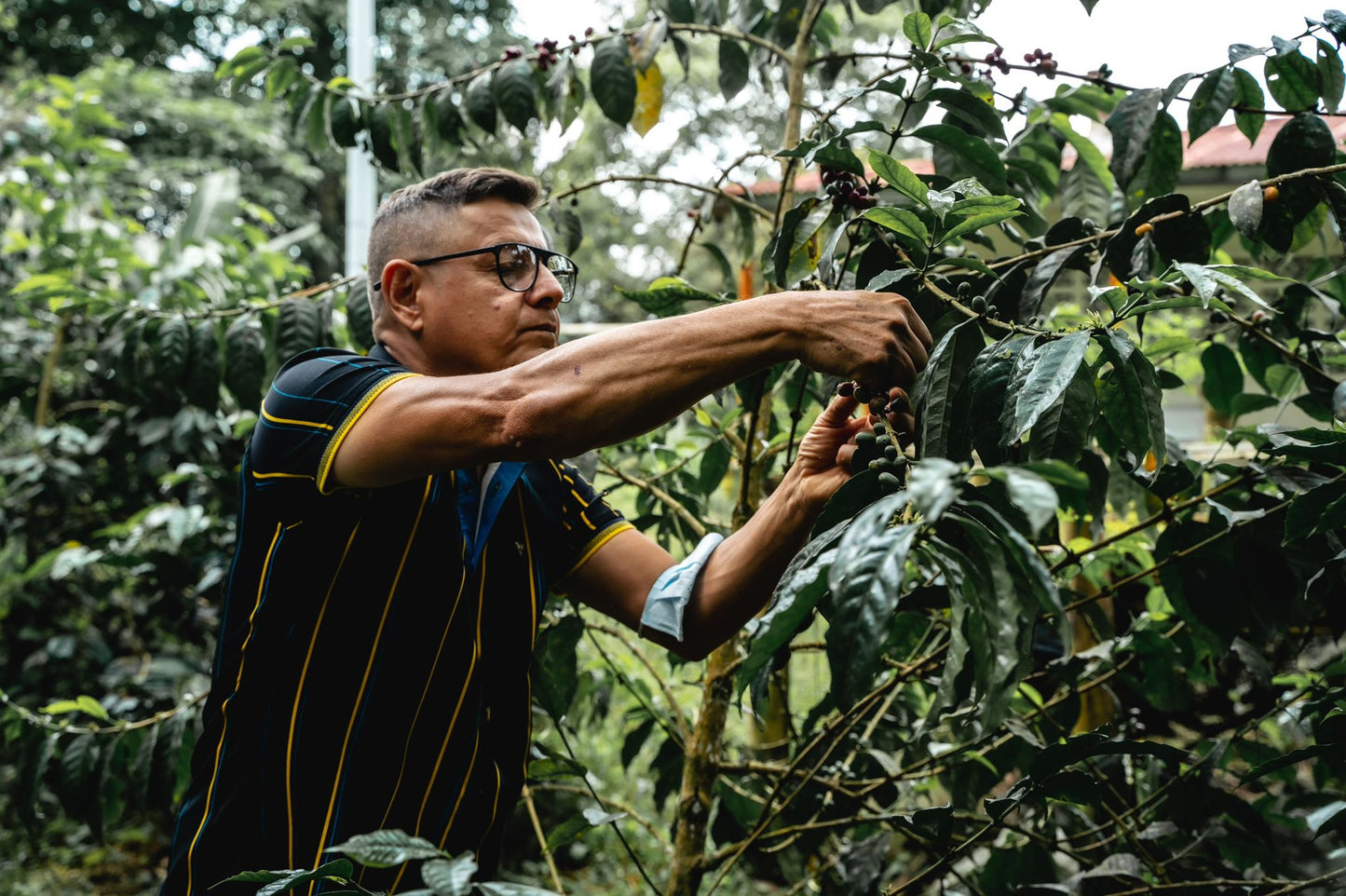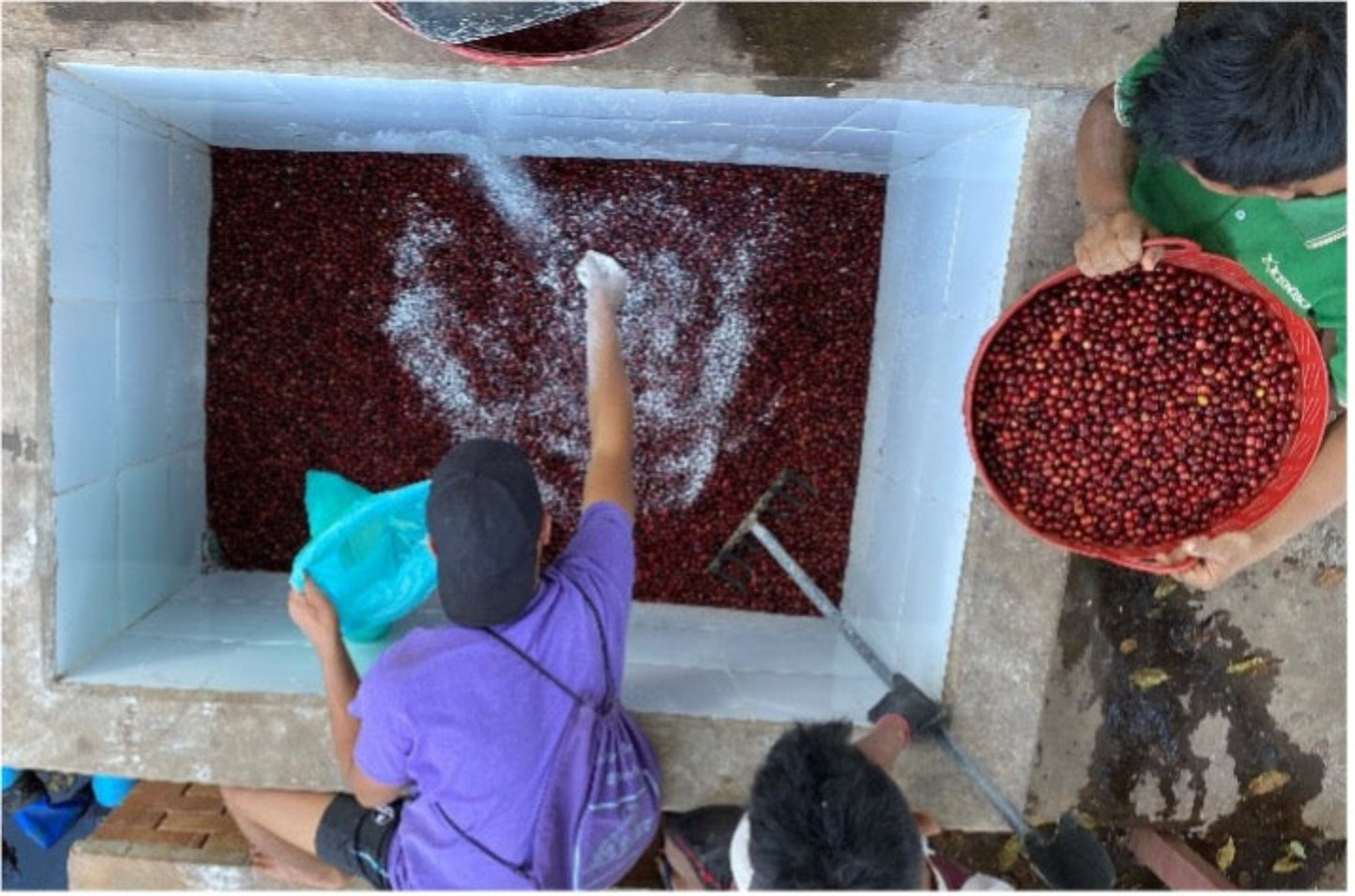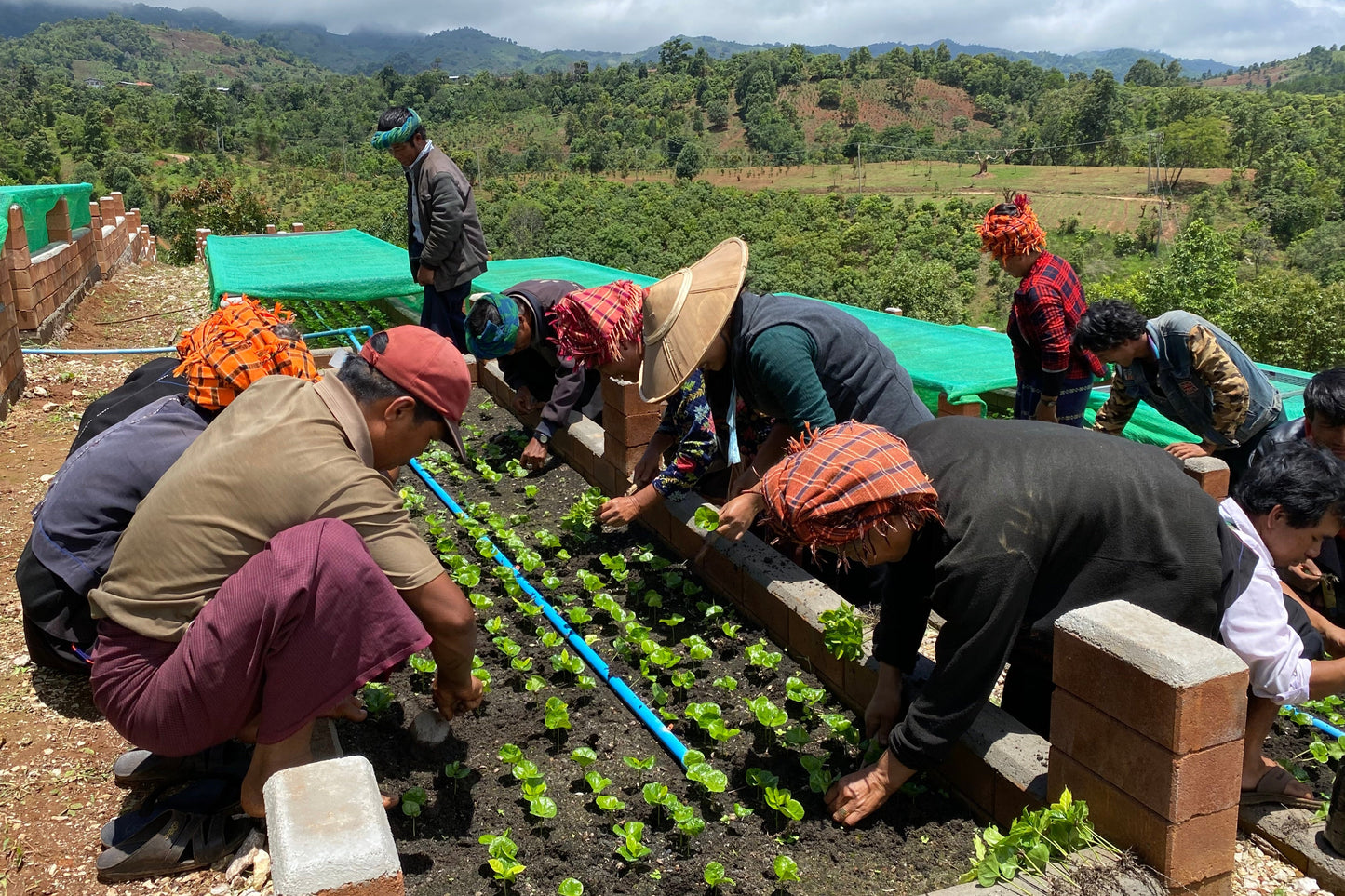ORIGIN SERIES: Burundi
Origin Series delves into coffee growing regions around the world and turns you into a knowledgeable coffee snob. As we begin showcasing a series of East-African coffees on our single origin lineup, Origin Series takes you to Burundi, a small landlocked country in the heart of the Great Lakes, where coffee often meets with a tragic colonial history.
BURUNDI’S FLAVOUR PROFILE
Often compared to neighbouring Rwanda, coffees from Burundi will display floral attributes (jasmine like), bright and crisp citrus-like acidity, red and dark berry fruit notes and honey-like sweetness.
The body is rich but clean, which makes it an interesting coffee to brew through immersion techniques like plunger or AeroPress, although filtration brewing methods like pour-overs will bring out the bright and more delicate notes.
BURUNDI | MASHA KAYANZA
Origin: Burundi, Kayanza
Washing Station: Masha
Variety: Red Bourbon
Processing: Washed
Altitude: 1,670 masl
Roast Profile:Filter, light-medium
Flavour notes: Redcurrant, Green Apple, Barker's Chocolate
Recommended use: Filter, Aeropress, plunger
Stay tuned for more stories from our Origin Series as we continue to explore the diverse world of specialty coffee.
Frequently asked questions
The history of coffee in Burundi is one of colonialism and conflict. Tossed between colonial empires throughout the 19thcentury, this central eastern country becomes a territory of Belgium in 1916.
Coffee is introduced to Burundi in 1920 by the Belgians, who, in the early 1930s, gave Burundian farmers coffee seeds, effectively forcing them to plant and grow at least fifty coffee trees – with no added resources, support or compensation.
The next twenty years were plagued by hardships for farmers: tension between the Hutu and Tutsi ethnic groups started escalating, and droughts in the early 1940s and the subsequent famine cost the lives of a fifth to a third of Burundians.
Following Burundi’s independence in 1962, the coffee sector was privatised, but for a short time only. In 1972, racial tensions aggravated and led to the genocide of 200,000 Hutus and the dispossessing of more than 300,000 Hutus. in 1976, the state took control over coffee fields and production. As a result, the quality declined, and crops were abandoned.
1993 marks the return of coffee to the private sector, but also the beginning of a decade of ethnic conflicts and civil war. Following the peace agreements signed in 2005, coffee emerged as a new hope and area of development for Burundi, with the appeal of increased foreign exchange and the success story of Rwanda’s rebuilding through coffee. Investment ramps up in the early 2000s, leading to an increase in both production and value of coffee from the country. The privatisation of the country’s washing stations and dry mills in 2008 has contributed to the increase in quality of coffees produced in Burundi, a symbol of a shift from yield to quality.
The history of coffee in Burundi is one of colonialism and conflict. Tossed between colonial empires throughout the 19thcentury, this central eastern country becomes a territory of Belgium in 1916.
Coffee is introduced to Burundi in 1920 by the Belgians, who, in the early 1930s, gave Burundian farmers coffee seeds, effectively forcing them to plant and grow at least fifty coffee trees – with no added resources, support or compensation.
The next twenty years were plagued by hardships for farmers: tension between the Hutu and Tutsi ethnic groups started escalating, and droughts in the early 1940s and the subsequent famine cost the lives of a fifth to a third of Burundians.
Following Burundi’s independence in 1962, the coffee sector was privatised, but for a short time only. In 1972, racial tensions aggravated and led to the genocide of 200,000 Hutus and the dispossessing of more than 300,000 Hutus. in 1976, the state took control over coffee fields and production. As a result, the quality declined, and crops were abandoned.
1993 marks the return of coffee to the private sector, but also the beginning of a decade of ethnic conflicts and civil war. Following the peace agreements signed in 2005, coffee emerged as a new hope and area of development for Burundi, with the appeal of increased foreign exchange and the success story of Rwanda’s rebuilding through coffee. Investment ramps up in the early 2000s, leading to an increase in both production and value of coffee from the country. The privatisation of the country’s washing stations and dry mills in 2008 has contributed to the increase in quality of coffees produced in Burundi, a symbol of a shift from yield to quality.
Today, Burundi doesn’t have coffee farms as such, but 800.000 farming families involved in coffee growing, and tending to 25 million coffee plants among other crops. Coffee is the country’s main export after gold, although green coffee production has plummeted from 34,000 metric tons to 6,000 metric tons in 2022/2023, partly due to the plant’s susceptibility to various diseases like potato defect, coffee leaf rust and coffee berry disease.
Today, Burundi doesn’t have coffee farms as such, but 800.000 farming families involved in coffee growing, and tending to 25 million coffee plants among other crops. Coffee is the country’s main export after gold, although green coffee production has plummeted from 34,000 metric tons to 6,000 metric tons in 2022/2023, partly due to the plant’s susceptibility to various diseases like potato defect, coffee leaf rust and coffee berry disease.
Burundi is located in the Great Lakes region of Central Eastern Africa. Most of the coffee in the country is grown between 1200 and 2000 meters above sea level. These high altitudes, combined with nutrient-rich volcanic soil and high yearly pluviosity, lead to pleasant acidity development and fruity and floral notes.
Burundi has five main coffee growing regions, but the majority of Specialty grade beans is grown in the Buyenzi region, located North of the country, bordering Rwanda. The climate and high elevations of the Kayanza subregion create high-scoring, high acidity coffees, with lively fruit notes, and consistently features in the yearly Cup of Excellence competitions. So does Ngozi, another subregion of Buyenzi. The mountainous region of Gitega in the very centre of the country is the home of a coffee laboratory that tests the quality of coffee exports before they leave the country. Other coffee growing regions include Bubanza, Muyinga and Kirundo.
The majority of coffee grown in Burundi is of the Bourbon variety family: Red Bourbon, French Mission Bourbon (a Kenyan natural mutation), Jackson (discovered in India in the early 20thcentury, Bourbon-related and rust resistant), and Mibirizi (introduced from Rwanda in the 1920s from Guatemala). The Bourbon family tends to display bright acidity, delicate florals and fruity notes.
Similarly to Kenya, Burundi farmers tend to use the wet processing method, with a double-washed approach: once harvested and pulped, the coffee seeds undergo a dry fermentation for about 12 hours, before being soaked in mountain water for up to 14 hours. The unripe seeds will float on the surface and set aside. The coffee is then submerged again for up to 18 hours, before being dried on raised beds out in the open air. This leads to a super clean and bright profile.
Burundi is located in the Great Lakes region of Central Eastern Africa. Most of the coffee in the country is grown between 1200 and 2000 meters above sea level. These high altitudes, combined with nutrient-rich volcanic soil and high yearly pluviosity, lead to pleasant acidity development and fruity and floral notes.
Burundi has five main coffee growing regions, but the majority of Specialty grade beans is grown in the Buyenzi region, located North of the country, bordering Rwanda. The climate and high elevations of the Kayanza subregion create high-scoring, high acidity coffees, with lively fruit notes, and consistently features in the yearly Cup of Excellence competitions. So does Ngozi, another subregion of Buyenzi. The mountainous region of Gitega in the very centre of the country is the home of a coffee laboratory that tests the quality of coffee exports before they leave the country. Other coffee growing regions include Bubanza, Muyinga and Kirundo.
The majority of coffee grown in Burundi is of the Bourbon variety family: Red Bourbon, French Mission Bourbon (a Kenyan natural mutation), Jackson (discovered in India in the early 20thcentury, Bourbon-related and rust resistant), and Mibirizi (introduced from Rwanda in the 1920s from Guatemala). The Bourbon family tends to display bright acidity, delicate florals and fruity notes.
Similarly to Kenya, Burundi farmers tend to use the wet processing method, with a double-washed approach: once harvested and pulped, the coffee seeds undergo a dry fermentation for about 12 hours, before being soaked in mountain water for up to 14 hours. The unripe seeds will float on the surface and set aside. The coffee is then submerged again for up to 18 hours, before being dried on raised beds out in the open air. This leads to a super clean and bright profile.
From the blog
Read the label is a series that breaks down the lingo & helps you choose the coffee that's right for...
READ THE LABEL: PROCESSING
Read the label is a series that breaks down the lingo & helps you choose the coffee that's right for...
ORIGIN SERIES: MYANMAR
We journey to the misty highlands of Myanmar, a Southeast Asian country whose specialty coffee scene is still emerging but...







